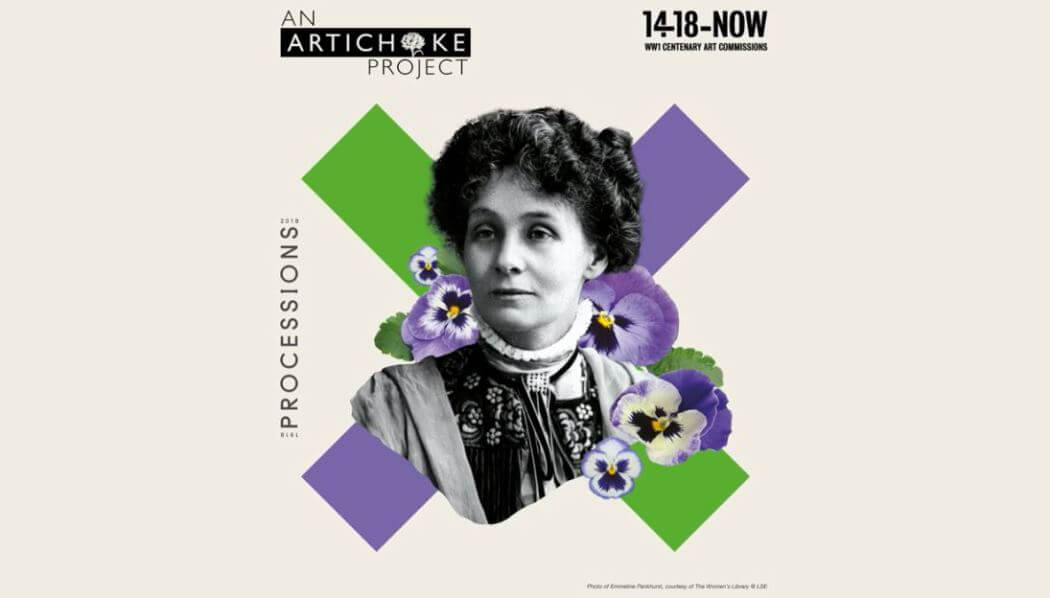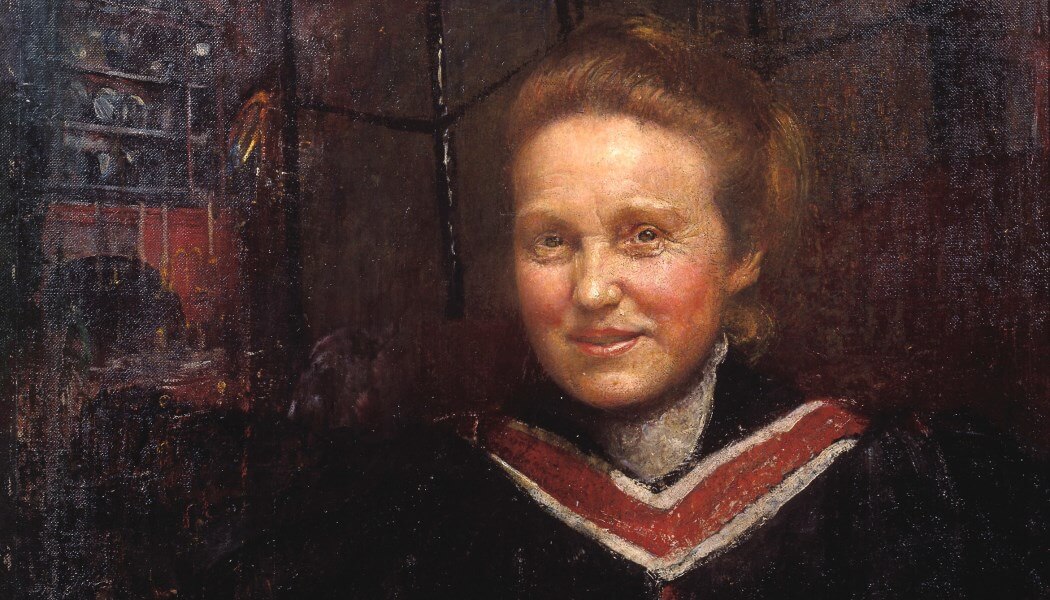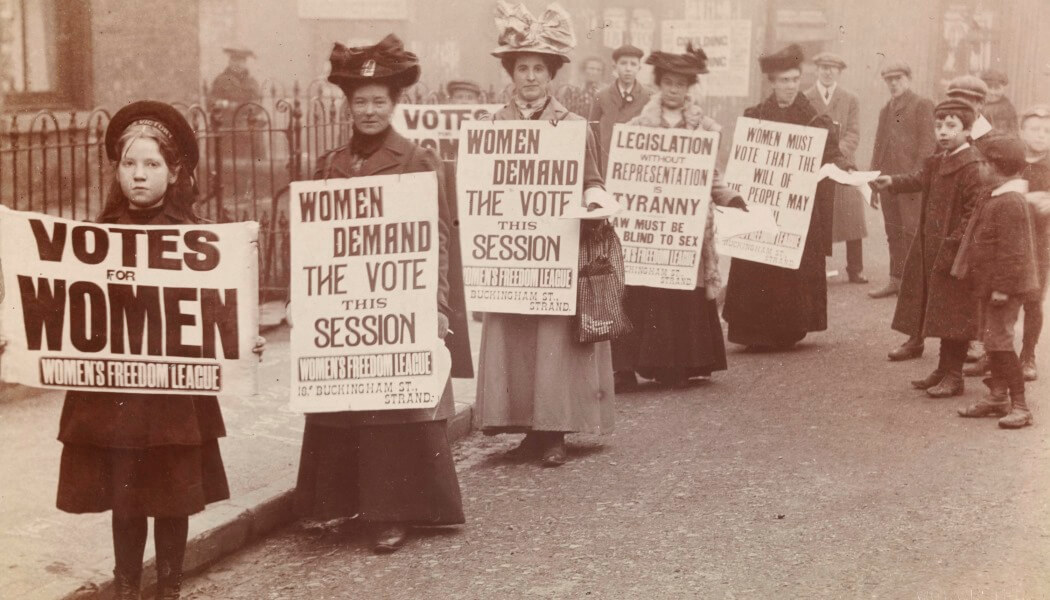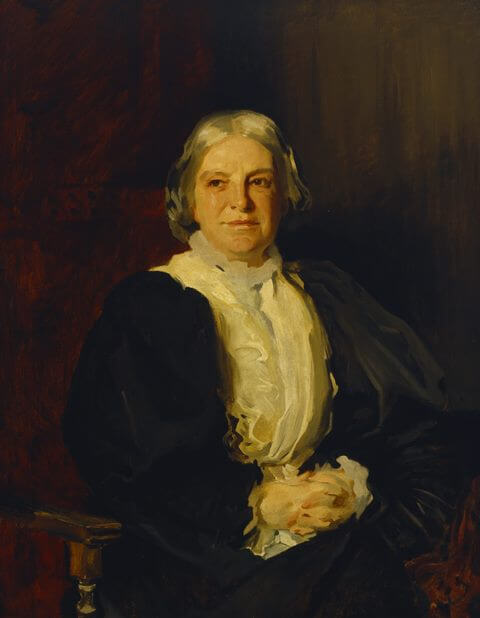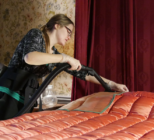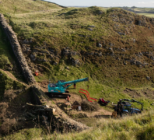The Representation of the People Act 1918 was a pivotal moment for the rights of women and for them being recognised more equally as their male counterparts. However, it had been a 50 year struggle to get to this point and the act only granted the vote to women over the age of 30 who met a property qualification. The same Act gave the vote to all men over the age of 21.
Women and Power seeks to shed light on this struggle and why it had so much opposition, and is part of the National Trust’s Challenging Histories series and builds on 2017’s Prejudice and Pride programme, a year-long celebration of LGBTQ heritage, to reveal hidden histories across the its properties. In 2019, 200 years after the Peterloo Massacre, the trust will focus on places where people have fought to express and contest their political rights.
As part of Women and Power, the trust is keen to point out this fierce opposition, from both male and female sides, to woman having the vote and becoming MPs. For suffragists they wanted to be able to have their say all kinds of matters they cared about such as the abolition of slavery, health, wars, working conditions, pay and equality: in essence to participate in democracy.
Even so, Octavia Hill, who helped establish the National Trust in 1895, was one of those who was against women’s suffrage and was in influential company, not least from Lord Curzon of Kiddleston Hall, who was Viceroy of India from 1899-1905 and Britain’s foremost anti-suffragist. He once said that women’s suffrage would: “be an injury … to the great organisations to which both sexes belong, namely the state and the empire.”
Exhibitions and events across the country
Anti-suffragist sentiment
Below: Octavia Hill (1838 – 1912) by John Singer Sargent. Photograph (C) National Trust Images, John Hammond
This opposition to women’s suffrage is highlighted in Parliament’s Voice & Vote: Women’s Place in Parliament exhibition, which will launch in June and give visitors the experience of women’s place in parliament, where, up until 1918, they were banned from the public galleries and had a whole host of surreptitious viewpoints to watch proceedings they had no influence over.
It was this lack of representation that fuelled the suffragist movements and in 1867 the National Society for Women’s Suffrage was formed. A year later the first ever public meeting is held in Manchester, with speakers such as Agnes Pochin a resident of the trust’s Bodnant Gardens in Conwy who is one of the figures featured in Women of Bodnant – The Long Fight. Her daughter Laura McLaren produced The Women’s Charter of Rights and Liberties in 1909 for the International Woman Suffrage Alliance, playing a key role in the passage of the Representation of the People Act 1918.
As the end of the 19th century approached more figures from National Trust properties became active members of the suffragist movement including Alice Acland of Killerton House in Exeter who founded the Co-operative Women’s Guild in 1883. Acland is also an important figure in the trust’s major touring exhibition Faces of Change: Votes for Women in partnership with the National Portrait Gallery. Her home at Killerton will be one of three venues for the exhibition that will merge National Portrait Gallery paintings photographs and prints with the properties’ own collections. At Killerton visitors will learn how Acland’s aunt, Gertrude was a founder member of Exeter’s anti-suffrage league.
The exhibition will start at the Workhouse, Nottinghamshire from April to July where it will offer an insight into the how the lack of political representation affected the working women of Southwell, before moving to Killerton from August to November and finally to Mount Stewart, Northern Ireland from November 2018 to February 2019, which has a history of extraordinary women, notably Edith Vane-Tempest-Stewart, Lady Londonderry, the founder of the Women’s Legion in 1915.
As the suffrage movement grew – in 1908 there was a mass rally on Hyde Park with 500,000 marchers – so too did the ranks of their opponents and in 1909 the Men’s Anti-suffrage Movement was formed. In the same year, as a response to hunger strikes by Suffragettes who had become imprisoned for vandalism, force-feeding was introduced. One of the more than 1,000 hunger strikers was Violet Ann Bland, a kitchenmaid at Dudmaston Hall, and member of Emmeline Pankhurst’s Women’s Social and Political Union, established in 1903.
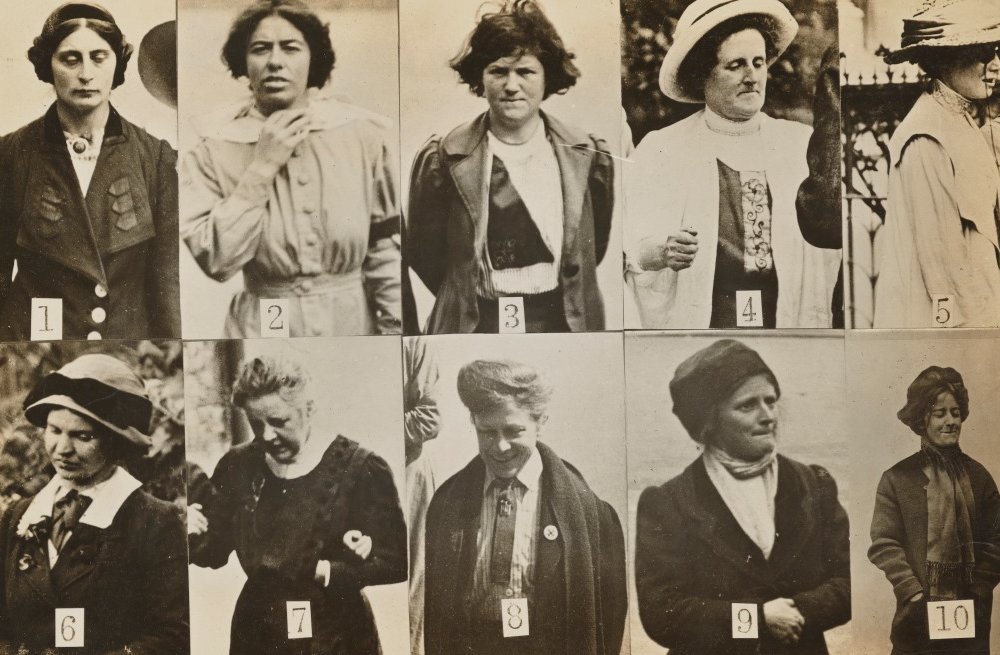
All these stories are perfectly captured in the National Trust’s guidebook – Women and Power: The struggle for suffrage co-authored by Dr Sophie Duncan, a postdoctoral researcher at Magdalen College, University of Oxford, and Rachael Lennon, who curates the National Trust’s Challenging Histories programme, and who developed and delivered Prejudice & Pride last year.
Celebrating a year of Women and Power programmes throughout the National Trust, the guidebook explores the roles of Trust places in the women’s suffrage movement, through the people who lived and worked in them – and also includes a timeline of important events.
Lennon says there are two elements to the Women and Power programme and they have slightly different aims and achieve slightly different outcomes. “One is that we are responding to the Representation of the People Act by exploring the journey that was made to get there, which is all about suffrage and what the National Trust can say about the suffrage movement.”
What the trust found through its research in partnership with the University of Oxford was that it had a huge number of connections to the suffrage story and because it has such a broad range of stories it could bring together suffragists, suffragettes and anti-suffragists and look at how the different argument interact. “The second side of the story is that this was a really personal argument for most people and it wasn’t just fought in parliament and it wasn’t just fought in the press, it was fought in people’s homes and within families.”
Lennon says that 100 places that programme women’s history, that’s staff and volunteers, and they have been doing research in some places for three years as to what are the hidden women’s histories associated with these properties and they have then run parallel leading up to this year’s programme.
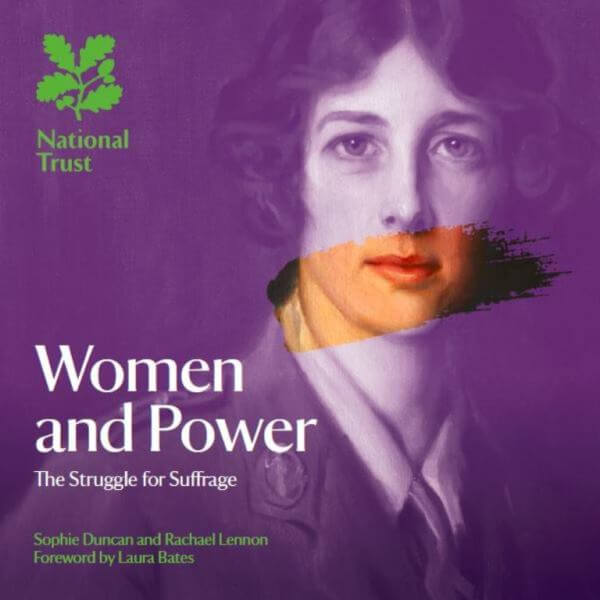

In order to carry out this extra work the trust has expanded the number of curators it has from 36 to 65 since 2016. Last month the trust also announced it was to increase its membership prices starting on 1 March by an average of 50p a month to help fund its biggest ever programme of conservation repairs, maintenance and improvements. It estimated that spent the equivalent of £2m a week on conservation work.
“We’ve talked about being for everyone and I think one of our top priorities is continuing to think through what that means locally and nationally,” says John Orna-Ornstein, director of curation and experience. “Also the conservation of our places is a huge challenge, for example Knole is costing £20m to restore, so these are big, big sums of money and therefore having the support of our members and support from Heritage Lottery Fund and other funders is going to be critical going forward.”
One of the trust’s properties that is currently being restored and also features prominently in the Women and Power programme is Knole House in Kent where the exhibition A Woman’s Place at Knole from 17 May – 4 November, will see the six commissioned artists respond to themes of women and power through sculpture, film, online content and includes Lubaina Himid, winner of the 2017 Turner Prize, and five other artists including, CJ Mahony, Emily Speed, Lindsay Seers, Melanie Wilson and Alice May Williams (main image). The history of women’s rights is well illustrated at Knole, where Vita Sackville-West was prevented from inheriting the house because of her gender. Sackville-west was also featured in Prejudice and Pride, as her lover Virginia Woolf, based her book Orlando on her.
“I think these big national programmes do help people relate to the National Trust and help encourage new audiences, says Orna-ornstein. “Prejudice and Pride was a great example of that when a number of our properties told stories that resonated about the 50th anniversary of the partial decriminalisation of homosexuality. And Women and Power is just going to build upon that and is actually going to tack place at more of our places. What we are trying to do is explore the history of our places that seem important and relevant and these big moments and anniversaries are important to reflect on. It’s not trying to be political or controversial it is trying to connect with people, be interesting and acceptable.”
The trust reached the 5m member mark last year for the first time and Orna-Ornstein says it is already incredibly visitor focused, which is why it has up to 25m visits to its places each year. In May the trust will hold a two day conference, Prejudice, Pride, Place 2018, with the University of Leicester, which will explore how heritage organisations can meaningfully engage diverse audiences in an attempt to ensure its programmes resonate with as many people as possible.
National Trust in 2018
Conservation and Restoration projects
The Vyne, a 16th century Tudor House in Hampshire a £5.4m project to repair the roof will come to an end on February 28 with 140,000 visitors experiencing a 360° rooftop walkway. The mansion will fully re-open in summer 2018.
At Knole in Kent, a 600 year-old former Archbishop’s palace, the National Trust has been undertaking a £19.8m building and conservation project – the largest in its history – supported by a £7.75m HLF grant. As part of the project, a multi-million pound conservation studio was opened last year and this year visitors can see conservation in action as experts work on the collection items before it reopens in spring 2019.
Clandon Park, Surrey suffered a devastating fire in April 2015 and plans are underway to restore the 18th-century Palladian mansion. This year visitors will be able to go into the house once again for what will be a final look at the building before restoration work begins architects Allies and Morrison to develop the designs that will restore and reimagine the property.
Castle Drogo, Devon Designed by Sir Edwin Lutyens, Castle Drogo is a unique 20th century castle. Unfortunately, the building’s complex vast flat roof failed early on in its construction and has leaked ever since. The last phase of repairs to the castle is scheduled to be completed at the end of 2018 and entails the roof, pointing and windows. This year offers the final chance to see the work up close via the scaffold viewing tower. nationaltrust.org.uk/castle-drogo
Exhibitions
The Holburne Museum, Bath – Prized Possessions: Dutch Paintings from National Trust Houses. 25 May – 16 September 2018.
For the first time, 22 of the finest 17th Dutch paintings from National Trust houses across the country will be going on display at the Holburne Museum in Bath. The exhibition is curated by David Taylor and Rupert Goulding of the National Trust, and will be accompanied by an illustrated book.
Petworth, West Sussex – William Blake in Sussex: Visions of Albion
13 Jan – 25 March 2018
Some of William Blake’s finest works from poetry to painting are on display at Petworth in Sussex in the first exhibition to bring together those that were inspired by Blake’s experience of living in the county. Works include those commissioned by the Wyndham family who owned Petworth, and rare hand-coloured relief etchings of Blake’s illustrated epic poem Milton.
Nostell, Yorkshire – Interior Worlds: Thomas Chippendale at Nostell
From 2 May to 28 October 2018
This year marks the 300th anniversary of the birth of Thomas Chippendale, one of the most significant and influential cabinet makers and designers in English history. At Nostell in Yorkshire, where Chippendale and the architect Robert Adam created interiors for the Winn family they will mount a celebration of Chippendale throughout the year. A collaboration with contemporary artist Giles Round and The Hepworth Wakefield will further explore Chippendale’s legacy as a creator of fashionable interiors and furnishings.
Trust New Art is the National Trust’s programme of contemporary arts inspired by its places. Many Trust places were built with art at their heart. Trust New Art has continued this important creative legacy since 2009, in partnership with Arts Council England. The programme makes contemporary arts available in National Trust properties; builds new and diverse audiences; and offers new opportunities for artists to work in different contexts.
Runnymede, Surrey – Writ in Water
Mark Wallinger, June 2018
In June, the anniversary month of the sealing of the Magna Carta just over 800 years ago, the National Trust will be unveiling a new public artwork by British artist Mark Wallinger, commissioned by the Trust, in association with Situations.
Lake District – First World War anniversary
Scafell Pike, in the Lake District, the highest mountain in England, was given by Lord Leconfield 100 years ago, while 12 Lake District summits, which included a large gift of land surrounding the iconic peak of Great Gable, were given by the Fell and Rock Climbing Club in memory of the fallen. This was described at the time as the ‘world’s greatest war memorial.’
Where Poppies Blow – The British Soldier, Nature, and The Great War, Wordsworth House, Cockermouth
10 March to 28 October
Wordsworth House and Garden will host a major new exhibition to commemorate the end of the First World War and celebrate the role of nature in helping Britain’s soldiers through the horrors of battle. The exhibition will be guest curated by author and historian John Lewis-Stempel, whose book Where Poppies Blow won the 2017 Wainwright Prize.
Scafell Pike
Work begins May 2018 – 100 years after the donation of Scafell Pike by Lord Leconfield, National Trust rangers will camp out on the peak while rebuilding the summit cairn, including resetting the memorial plaque into the walls of the cairn.


